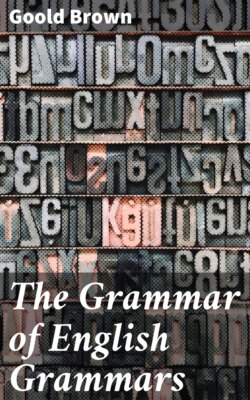Читать книгу The Grammar of English Grammars - Goold Brown - Страница 62
На сайте Литреса книга снята с продажи.
IV. FORMS OF THE LETTERS.
ОглавлениеTable of Contents
In printed books of the English language, the Roman characters are generally employed; sometimes, the Italic; and occasionally, the [Font change: Old English]: but in handwriting, [Font change: Script letters] are used, the forms of which are peculiarly adapted to the pen.
Characters of different sorts or sizes should never be needlessly mixed; because facility of reading, as well as the beauty of a book, depends much upon the regularity of its letters.
In the ordinary forms of the Roman letters, every thick stroke that slants, slants from the left to the right downwards, except the middle stroke in Z; and every thin stroke that slants, slants from the left to the right upwards.
Italics are chiefly used to distinguish emphatic or remarkable words: in the Bible, they show what words were supplied by the translators.
In manuscripts, a single line drawn under a word is meant for Italics; a double line, for small capitals; a triple line, for full capitals.
In every kind of type or character, the letters have severally two forms, by which they are distinguished as capitals and small letters. Small letters constitute the body of every work; and capitals are used for the sake of eminence and distinction. The titles of books, and the heads of their principal divisions, are printed wholly in capitals. Showbills, painted signs, and short inscriptions, commonly appear best in full capitals. Some of these are so copied in books; as, "I found an altar with this inscription, TO THE UNKNOWN GOD."—Acts, xvii, 23. "And they set up over his head, his accusation written, THIS IS JESUS, THE KING OF THE JEWS."—Matt., xxvii, 37.
